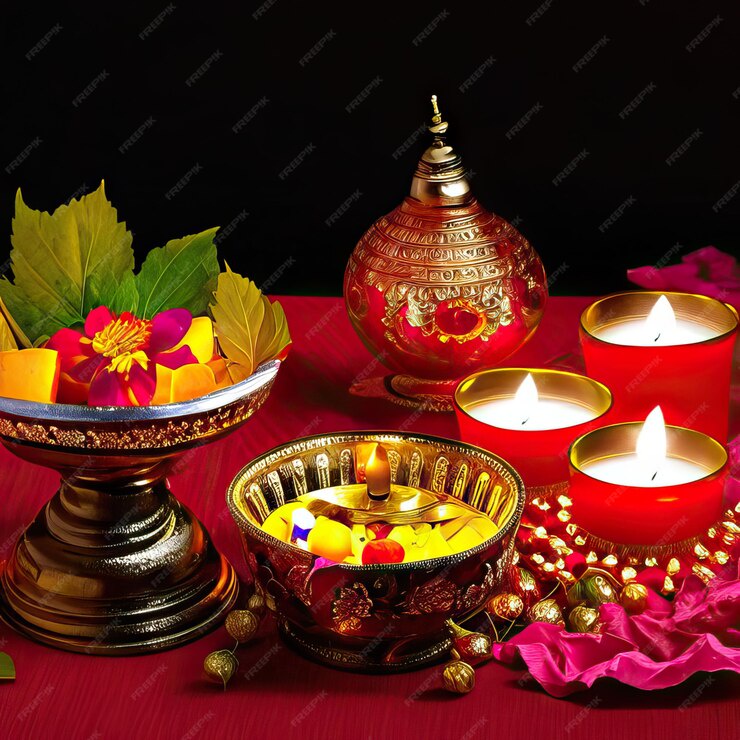India, a land rich in culture and tradition, harbours rituals deeply intertwined with spirituality and symbolism. Among these, the use of diyas and puja items stands out, playing important roles in various religious ceremonies and festivals across the nation. Let us understand the profound meanings behind these sacred objects.
Diyas
Diyas, or oil lamps, hold profound spiritual significance in Hinduism. They embody the victory of light over darkness and wisdom over ignorance. Crafted traditionally from clay, these lamps are filled with ghee or oil and lit with a cotton wick during religious observances, prayers, and festivals.
Diwali
Diwali, known as the Festival of Lights, sees homes, temples, and streets adorned with diyas, creating a captivating aura. Beyond its religious connotations, Diwali symbolises prosperity, renewal, and the triumph of righteousness. The lighting of diyas signifies the awakening from darkness to enlightenment, marking the victory of good over evil.
Puja items
Puja items encompass an array of ritual objects essential for worship across various Indian religions. From incense sticks (agarbatti) to sacred threads (mouli), each element holds symbolic significance, meticulously arranged on a puja thali or tray during religious ceremonies.
Symbolism
Incense sticks (Agarbatti): Purify the mind and serve as offerings to the divine.
Camphor (Kapur): Represent the purification of the self, burning away ego and impurities.
Sacred water (Jal): Utilised for sanctification and purifying the surroundings.
Flowers (Pushp): Offered as tokens of devotion and gratitude.
Sandalwood Paste (Chandan): Applied as a mark of spiritual purity and auspiciousness.
Sacred Threads (Mouli): Symbolize protection and the bond between the devotee and the divine.
Puja rituals
Puja, whether conducted in the tranquillity of homes or temples, is a deeply personal practice. It is a time for introspection, gratitude, and communion with the divine. Through the meticulous arrangement of puja items and the chanting of mantras, devotees seek blessings, guidance, and spiritual fulfilment.
Fostering unity
Beyond their religious connotations, diyas and puja items foster unity and reverence within communities. Families come together to partake in rituals, share sacred meals, and exchange blessings during festivals and auspicious occasions. These traditions serve as poignant reminders of the interconnectedness of all beings and the importance of leading lives infused with virtue and compassion.
Conclusion
Diyas and puja items, found in home décor stores, embody the essence of Indian spirituality and tradition, embodying timeless wisdom and devotion. By lighting diyas and performing puja, individuals forge connections with the divine, cultivate inner peace, and uphold values of faith, love, and harmony.


No comments yet